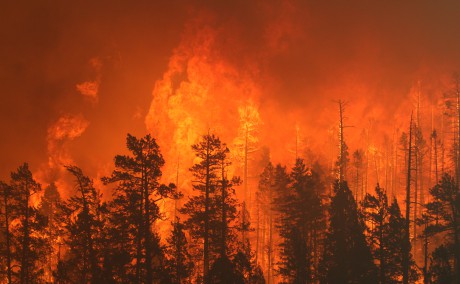The National Wildfire Coordinating Group’s definition of extreme fire behavior indicates a level of fire behavior characteristics that ordinarily precludes methods of direct control action. One or more of the following is usually involved: high rate of spread, prolific crowning/spotting, presence of fire whirls, and strong convection column. Predictability is difficult as such fires often influence their environment to some degree and behave erratically, sometimes dangerously. Alternate terms include “blow up” and “fire storm.” Fire managers examining fires over the last 100 years have come to understand many of the factors necessary for extreme fire behavior development. This effort produced guidelines included in current firefighter training, which presents the current methods of predicting extreme fire behavior by using the crown fire model, which is based on the environmental influences of weather, fuels, and topography.
No one completely understands all the factors contributing to extreme fire behavior because of gaps in our knowledge. These gaps, as well as the limitations as to when various models or indices apply should be noted to avoid application where they are not appropriate or warranted. This synthesis summarizes existing extreme fire behavior knowledge. It consists of two volumes. Volume 1 is for fire managers, firefighters, and others in the fire community who are not experts or specialists in fire behavior but need to understand the basics of extreme fire behavior. Volume 2 is more technical and is intended for fire behaviorists and fire researchers.
Image Source: Laboratory of Tree-Ring Research

